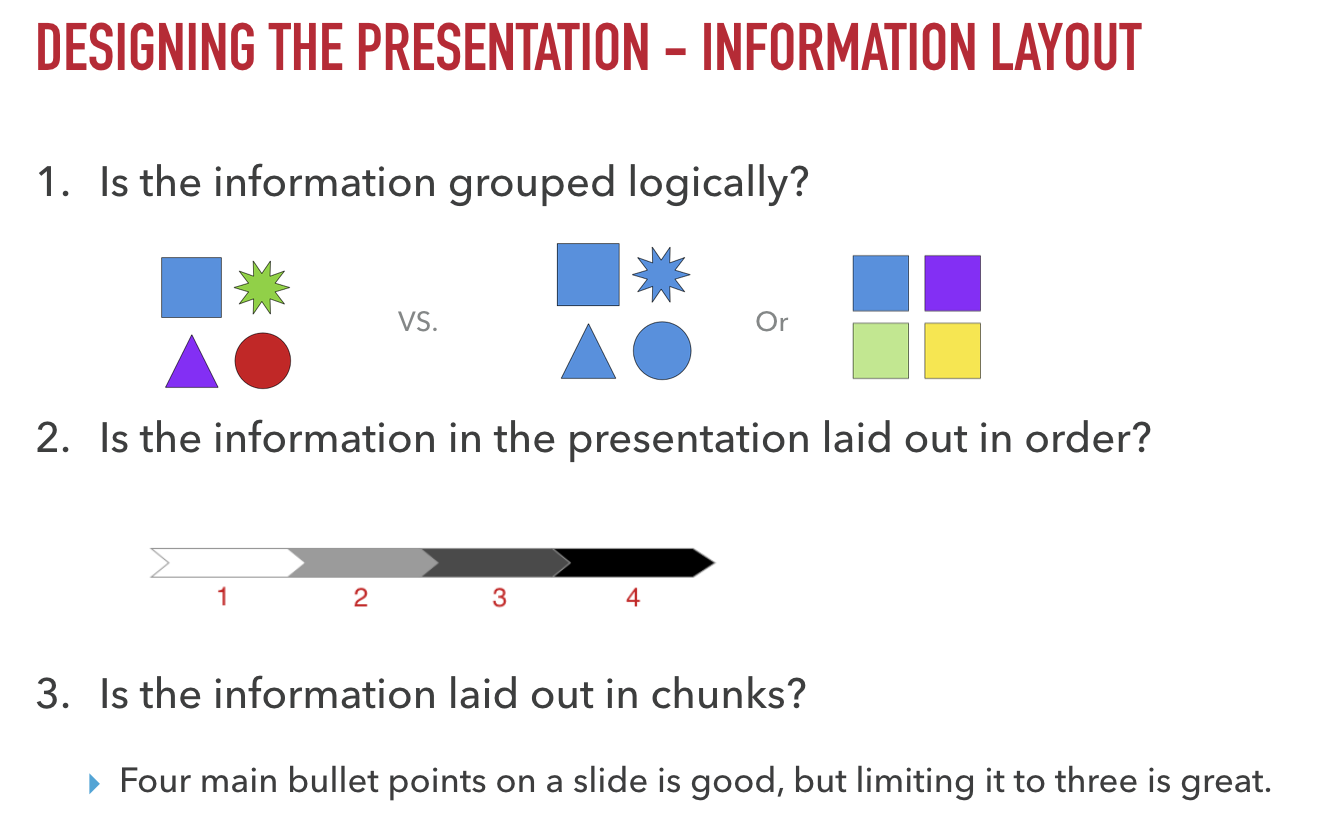Part 2 - Improving Your Presentations with UCD: Design
Summary
By applying the User-Centered Design model when creating your presentations, you will drastically improve your presenting skills. In this article, I will discuss the design aspects to take into considerations, such as storytelling, Gestalt Principles, and information architecture.
Photo Credit - Teemu Paananen
Information Layout
You know there are certain topics or pieces of information you'll need to cover. Lay them out first and organize them appropriately to create the foundation for your presentation.
- Is the information grouped logically?
- Is the information in the presentation laid out in an appropriate order?
- Is the information laid out in chunks?
Media
Determine some of the aspects of the presentation to know what type of media you should be presenting on:
- Printed as a handout from a PDF?
- Drop hyperlinks and display the entire URL.
- Presented in person or remote?
- Prepare for your environment and how other users will interact with it.
- Presented with Audio or Video?
- A simple audio or video clip from a real customer can add empathy.
Visual Design
There is too much to cover in one article for this, so I will list a few main areas that will drastically improve your visual design if you are new or struggling with presentations.
- Gestalt Principles
- Seven principles that the brain uses to group item or find patterns which help you organize information visually for your audience.
- The Golden Rule
- Also known as the “Rule of Thirds”. This helps bring balance to the presentation's layout.
- Example - The iPhone's camera has a grid setting which breaks up the frame vertically and horizontally into the rule of thirds.
- Less is More
- If the visual design hinders the audience’s ability to comprehend your presentation, then you need to drop those aesthetics.
Timing
Studies find that adults have 10 minutes worth of sustained attention at a time, but they learn best in 20-minute chunks.
- Keep it brief
- Break it up into chunks
Storytelling
Listening to stories is more natural for humans than interpreting data or critically analyzing information on the fly
- People actually respond more to anecdotes than data, so try to include both in your presentations
- Include examples for your main points
- For the brain, an example is simply a story in a condensed format. Use this to your advantage.
Resources
I highly recommend the book "100 things every presenter needs to know about people" by Susan Weinschenk which helped inform me most about improving my presentations.

